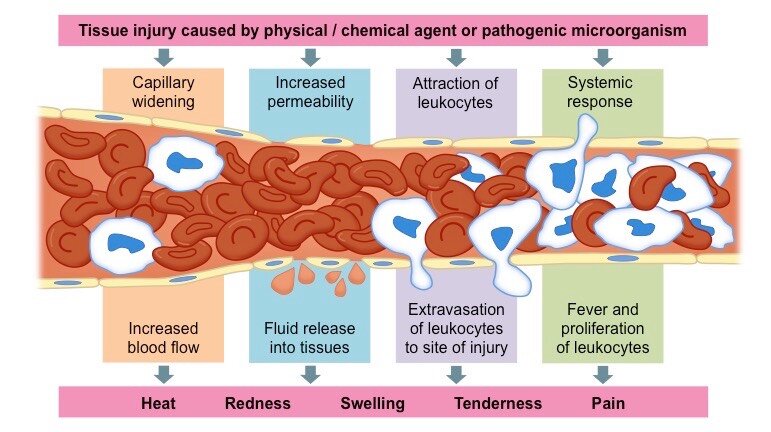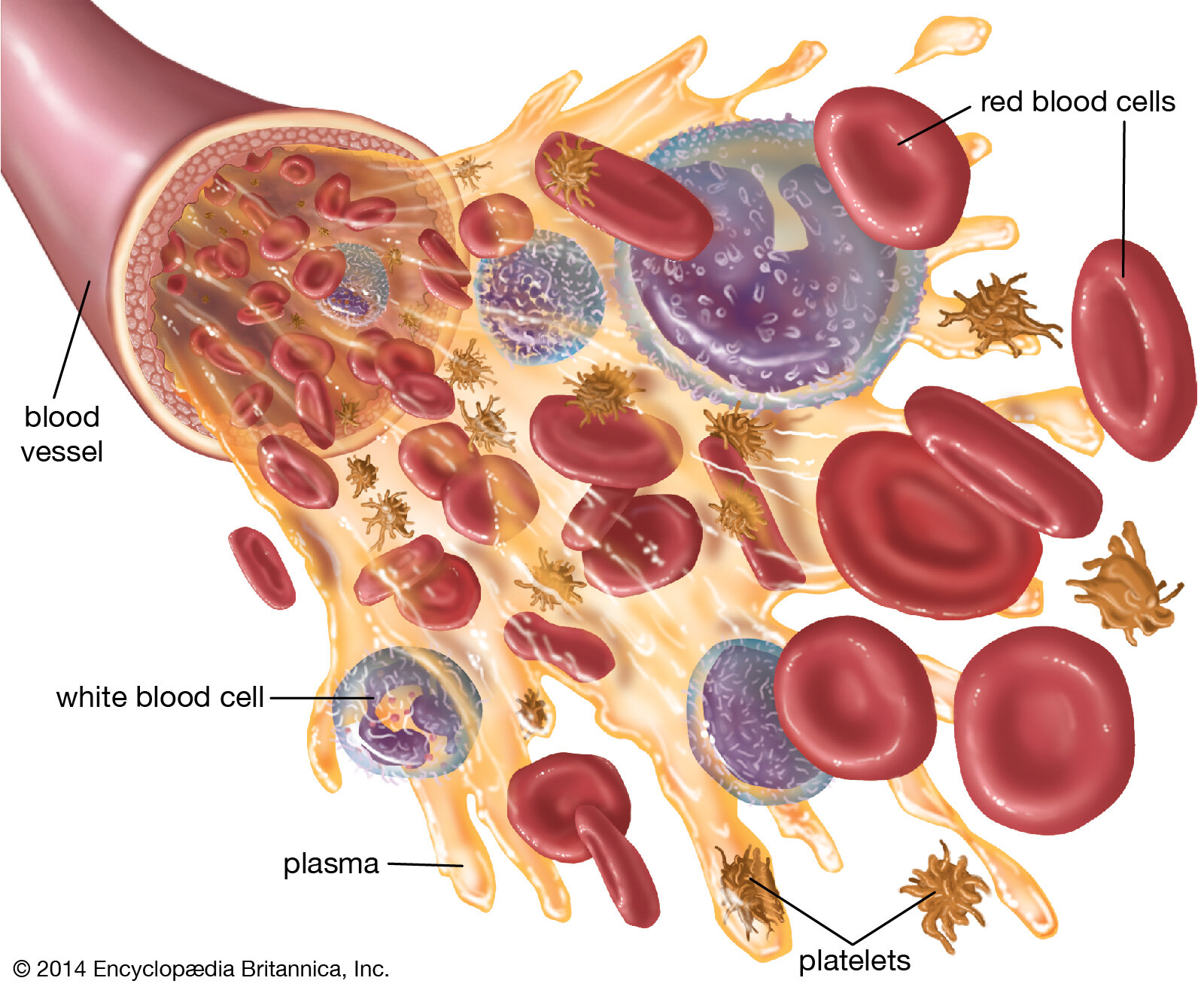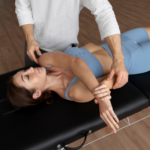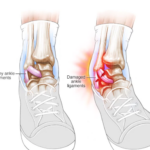Inflammation is an essential, natural response by the body to treat injury or infection. Without the inflammatory response, injuries would not heal and infections could fester. There are two types of inflammation, acute and chronic. This article will focus on the acute inflammatory response that occurs due to an injury.
So, what exactly is going on during this acute inflammation response?

The Acute Inflammatory Response Simplified
Most of us are familiar with acute inflammation that occurs due to an injury, such as a strained muscle. When an injury occurs, our immune system kicks into action and deploys white blood cells to the damaged area to begin the healing process. White blood cells swarm an injury much like many insects swarming a food source. To help facilitate this increase in white blood cells, the blood vessels at and around the injury site dilate. This dilation allows for increased blood flow to the area resulting in the familiar symptoms of inflammation: pain, swelling, redness, heat, and decreased mobility of injured area. Acute inflammation generally lasts a few days.
Our bodies are intuitive and for the most part, they are very adept at self-preservation. Just as our immune system jumps into action upon an injury to our soft tissue, it signals the body to stop the immune response when the job of healing and repair is done. Blood vessels return to normal and white blood cells either get directed elsewhere or self-destruct to be recycled or discarded.


The RICE Method
In 1978, Dr Mirkin published his best-seller, The Sportsmedicine Book. In this book he coined the now commonly used term RICE as the best protocol for treating a soft tissue injury during its acute phase. RICE stands for:
R-rest
I-ice
C-compression
E-elevation
For decades, this method has been utilized by many, including coaches, athletic trainers, physical therapists, doctors, and massage therapists. However, over the course of the last decade, science has continued to conduct tests and experiments, and the most recent discussion is that ice may not aid in the healing process but might actually delay and possibly hinder it.1,2,3,4 Even Dr Mirkin now agrees that he initially got it wrong.

The ICE Controversy
When we apply ice to a soft tissue injury, we may only be treating the uncomfortable symptoms of inflammation, primarily pain. Ice, cold therapies, even anti-inflammatory medication such as NSAID’s, all cause the blood vessels to constrict, decreasing blood flow and making it more difficult for the white blood cells to get to the injury and do their job of healing. Hence, possibly slowing down or delaying the healing process. There is evidence that after icing it can take several hours for the blood vessels to dilate enough to get healthy blood flow back to the area.1 Depriving tissues of blood flow can lead to nerve damage and death of cells. Using ice sparingly to treat pain may still be an acceptable practice but considering the evidence for hindering the natural healing process should be used with caution.
The REST Controversy
Much like ice, complete rest is no longer advocated either. As long as movement doesn’t further complicate the injury, it can be continued, albeit gently. Our hearts are the pump behind keeping our blood moving around the body, carrying oxygen and nutrients so our cells can function and rebuild. Our muscles are what keeps our lymphatic fluid moving. Our lymphatic system not only helps to carry white blood cells to the area of an injury, but it helps to remove toxins and waste from an area as well. Unlike our blood which is constantly circulating through our entire body, our lymph only flows up toward our chest and neck. If we stop moving it is easy for this fluid to stagnate or pool in an area causing swelling and other problems. Thus, gentle movement of an injury site and the surrounding area as soon as comfortably possible is critical to healing. For severe injuries, check with a doctor before moving especially if weight bearing is involved.
It ain’t all bad!
Compression and elevation still seem to be accepted as good methods for initial treatment of injury. Mild compression and elevation can keep swelling to a minimum without hindering the function of inflammation itself. Once the acute inflammatory response has begun subsiding, sessions with your sports massage therapist can further aid in the movement of blood and lymphatic fluid to and away from the area of injury and help prevent the accumulation of excess scare tissue. As with all serious injuries, be sure to talk to your doctor before resuming normal activities.
Resources
- https://www.drmirkin.com/fitness/why-ice-delays-recovery.html
- https://www.washingtonpost.com/lifestyle/wellness/why-icing-a-sprain-doesnt-help-and-could-make-the-injury-worse/2019/03/04/25a6caa0-3ae4-11e9-a2cd-307b06d0257b_story.html
- https://www.howardluksmd.com/orthopedic-social-media/ice-ice/
- https://www1.racgp.org.au/newsgp/clinical/is-it-time-to-rethink-rice-for-soft-tissue-injurie
- http://jonlieffmd.com/blog/the-many-ways-neurons-regulate-immune-function
- http://jonlieffmd.com/blog/white-blood-cell-conversations-in-chronic-inflammation
- https://www.medicalnewstoday.com/articles/248423#causes
- https://www.health.harvard.edu/heart-disease-overview/ask-the-doctor-what-is-inflammation
- https://www.livescience.com/26983-lymphatic-system.html
Image Sources
- https://physiotherapyworks.ie/wp-content/uploads/2018/04/acute20and20chronic1.png
- https://www.britannica.com/science/white-blood-cell
- https://ib.bioninja.com.au/_Media/inflammation_med.jpeg
- http://thewhiskeychicks.com/wp-content/uploads/2014/01/ice-cube.jpg
This article/video is for educational purposes only; do not attempt without your physician’s clearance. If you are in pain or injured, see your physician.
Copyright © Vidal Sports LLC 2020






